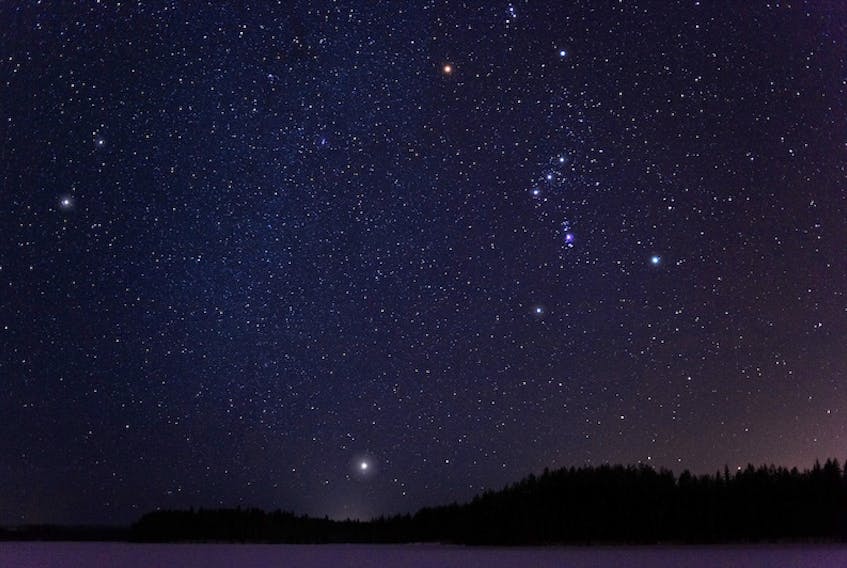Well, here comes winter, so I thought we would take a look at the winter sky to see what we can see this season.
Firstly, we must remember that the sky objects that are fully up during winter are in the process of rising in the east as the season approaches.
So, let us start with Orion. The constellation is Orion the Hunter, but to me, he looks like a slightly skewed hourglass that will stand straight up in the South by mid-December.
Now Orion is really the secret of seeing the rest of the winter panorama. There is a circle or oval of stars around Orion, with each star in a different constellation. Let us follow them around Orion.
First, we look at the most prominent star in the sky – Sirius. This is in the constellation Canis Major, the Big Dog. This constellation actually looks like a dog. Sirius is to the left of Orion and slightly down. Remember – it is the brightest star in the sky. Sirius is the shoulder of the dog and the dog is climbing upwards into the sky.
Next in the oval, we look for Procyon. Procyon is seen almost directly above Sirius, also fairly bright, and rising about one hour before Sirius. Procyon is in the constellation Canis Minor, the Little Dog. But while Procyon is evident, the constellation is not. It is just two stars in a row so be happy with finding Procyon.
From here we go upwards again and a little to the right. We find two stars – Pollux and Castor. Both are also bright, and representing the heads of Gemini the Twins, with their bodies trailing down and to the right. They are not hard to follow.
As we continue, we travel to the right, slightly down and we find Capella, a quite bright star in the constellation Auriga, the Charioteer. This constellation in the form of a pentagon or 5-sided figure with Capella as the brightest of its points.
As we continue along our oval, we go down and to the right, and we encounter Aldebaran. This bright star is in the constellation Taurus the Bull, and in fact, Aldebaran is on top of the left horn of the horns of Taurus. This very clearly looks like a small” V”.
Finally, to complete our oval, we traverse down and to the left and we arrive at Rigel a truly supergiant blue, white star which forms the bottom right-hand corner of our hourglass that we started with. You can do this. You do not need any special equipment, except of course warm clothes. You can follow the winter oval. Make it your challenge.
So, what is in the sky this month?
As always, let us look at the planets first. Well, it is all about Jupiter and Saturn. They are to be found in the Southwest at dusk and what is exciting is that they are approaching each other such that on Dec. 21 they will be closer together as we visualize them, since 1623 and will not be as close until 2080.
Mars is high in the Southwest at dusk and still bright.
Venus is of course the spotlight of the morning sky. Do not miss it.
But it is not just the planets. The Geminid meteor shower peaks on the night of Dec. 13 and it is prolific, and fun to watch.
New Moon: Dec. 14
Full Moon: Dec. 29
See you next month.
Your Night Sky Guy,
Rolly Chiasson
Dr. Rolly Chiasson is your night sky guy. To comment or get in touch with him email [email protected].









